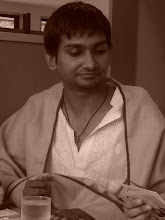Every sheet of music ever written is full of question marks. Is music for the soul, for the ears or for the brain? Is it a social concept, intimate concept, political concept or cultural concept? The vexed issue of evaluation of music as an art has been dealt with by innumerous ethnomusicologists, musicians, philosophers, anthropologists etc. in various theoretical, experimental, even dogmatic ways, but the conclusions have always proved out to be inept. Every attempt of classification of music has been turned down by time as abortive with intermingling of genres and recreation of forms. For eg. whether a non-Westerner studying Bach or Mozart would also be an ethnomusicologist, and whether ethnomusicology, as a Western invention, is simply a disguise for the continued dominance of Western concepts and values is a paradoxical question over the whole approach that is termed as ethnomusicology. Similarly, the Impressionist movement in music led by the French composer Claude Debussy, influenced by the paintings of the French Impressionists and by the poetry of Paul Verlaine, Charles Baudelaire, and Stéphane Mallarmé; emphasized tonal colour and mood rather than formal structures such as the sonata and the symphony but by the beginning of World War I in 1914, provoked adverse criticism from composers and critics alike for its over-refinement and technical limitations. A new group of anti-Romantic French composers, Les Six, influenced by Erik Satie, satirized and revolted against these excesses. Eventually, Impressionism, which had been conceived by Debussy as a revolt against Romanticism, came to be regarded as the final phase of Romantic music. History is filled with such ironies and contradictions. The form and function of music has always been a question of great debate all over the world, and so is it, even today.
It becomes important, at this time, to look at the aleatory music techniques, not as an answer or as a refuge (which, frankly speaking, we don’t even need) but as a fresh point of view towards looking at music. For eg. Minimalism evolved in the United States taking influence from Indian improvisation, Balinese gamelan, and African drumming. The experimentalists John Cage and Harry Partch can be seen as father-figures, but La Monte Young was the earliest exponent with his group Theater of Eternal Music, founded in 1962. Terry Riley, Philip Glass, Steve Reich etc are other remarkable figures. Similarly, influenced by the Zen Buddhist philosophy of adapting to the world rather than attempting to shape it, Cage’s attempt to reduce the musical importance of the composer, seeking to find music in life and the environment, rather than to create it by using silence as a musical element, with sounds as entities hanging in time, and exploring ways of incorporating certain degrees of randomness in his music came to be known as Music of Changes (1951) for piano, where, combinations of notes occur in a sequence determined by tossing coins, in accordance with the Chinese Book of Changes, Yijing. In 4′ 33′′ (1952), the performers sit silently at instruments; the unconnected sounds of the environment are the music. Like Theatre Piece (1960), in which musicians, dancers, and mimes perform randomly selected tasks, 4′ 33′′ dissolves the borders separating music, sound, and non-musical phenomena.
What you will listen here, is an extension of these and several other techniques, which we believe, move towards a radical concept of ‘Free Music’. The emphasis here is not towards freeing the music from all the above and several other ‘classical’ and ‘non-classical’ influences, but on the contrary, to allow the artists, to move freely and merge all the possibilities that he wants to explore with a musical piece, not worrying about any possible influence of form or technique. This, we believe, is a true strive towards ‘Free music’. The idea here also is not to play with the term ‘Free music’ but to understand the phenomenon of free music. Any attempt to eradicate a certain kind of an influence from music is ironically an attempt to create a rigid ‘form’ of music- and thus, can’t be termed as ‘free’. Therefore, we allow the free flow of artists’ emotions to create their own music, free from all pre-conceived notions- a truly formless music. Thus, we propose ‘Free music’, not as a term, but as a belief, in continuation of several aleatory techniques already existing in the field of music. We also do not call this a new concept, as this ofcourse is not, but instead a small endeavour towards re-discovering music- with a free and honest heart…. the only requisite for a truly free music. May this freedom stir the souls of all the living beings. Amen.
Monday, November 24, 2008
Subscribe to:
Post Comments (Atom)

3 comments:
Wonderful fren... all d best... m sure you will succeed in it!!!!
:)
:(
Post a Comment